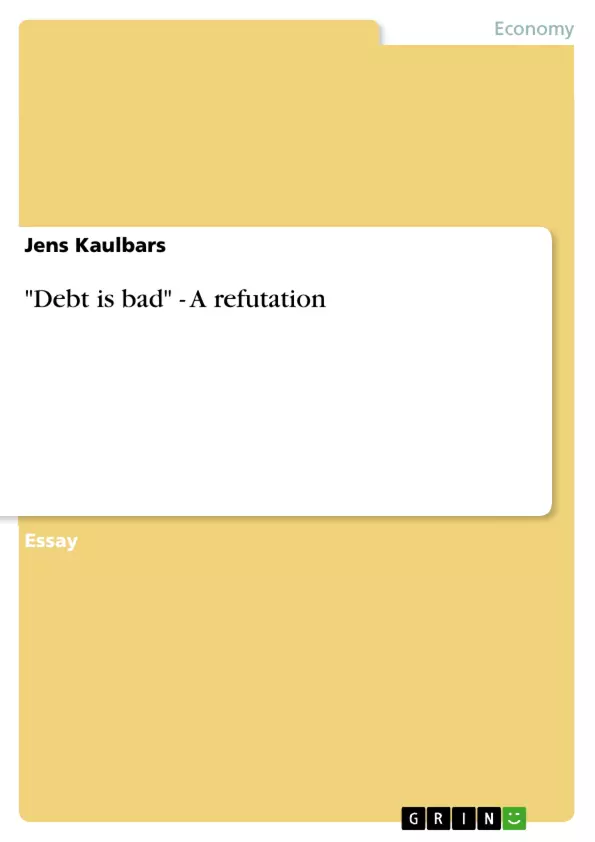Throughout all the times since humans started to exchange goods for trade, there has been the common opinion that debt is a bad, sometimes even shameful thing to have. Thus it is not astonishing that in Shakespeares’ Hamlet Lord Polonius advises his son Laertes: “Neither a borrower nor a lender be” (William Shakespeare, 1598-1602, Act 1 Scene 3), for this clearly expresses the point of view people had and many still adopt. However this would mean a generalization of the term “debt”, which cannot be made that easily: “To say that all debt is bad is to say that all debt is alike – which is simply not true” (Tim Cestnick, 2005, p.16).
Inhaltsverzeichnis (Table of Contents)
- „Debt is bad“ – A refutation
- Good debt
- Examples of Good and Bad Debt
- Credit Card
- Home Mortgage
- Investment Loan
- Educational Loan
- Conclusion
Zielsetzung und Themenschwerpunkte (Objectives and Key Themes)
This paper challenges the traditional view that debt is inherently bad and explores the concept of "good debt" as a tool for wealth creation. It argues that debt can be a beneficial instrument when utilized strategically for investment purposes.
- The concept of "good debt" and its distinction from "bad debt"
- The economic and social implications of debt
- Examples of good debt, including home mortgages, investment loans, and educational loans
- The importance of responsible debt management and avoiding excessive debt
- The potential for debt to facilitate wealth creation and enhance quality of life
Zusammenfassung der Kapitel (Chapter Summaries)
- The paper begins by challenging the conventional perception of debt as inherently negative, citing examples from literature and popular culture. It introduces the concept of "good debt" as a form of borrowing for investment, emphasizing its potential for long-term financial gains.
- The author then delves into the economic rationale behind good debt, explaining how borrowing can inject cash into the economy and stimulate growth. The paper identifies three key indicators for distinguishing good from bad debt: the purpose of borrowing, the interest rate, and tax deductibility.
- The paper provides illustrative examples of good and bad debt, focusing on the use of credit cards, home mortgages, investment loans, and educational loans. Each example is analyzed based on the three key indicators, highlighting how the purpose, interest rate, and tax deductibility can determine whether a debt is beneficial or detrimental.
Schlüsselwörter (Keywords)
Key concepts explored in this paper include: good debt, bad debt, investment, interest rates, tax deductibility, credit cards, home mortgages, investment loans, educational loans, wealth creation, economic growth, responsible debt management.
- Citar trabajo
- Jens Kaulbars (Autor), 2006, "Debt is bad" - A refutation, Múnich, GRIN Verlag, https://www.grin.com/document/77311



